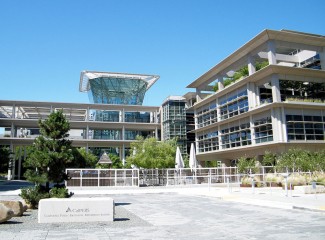
“And judgment is turned away backward, and justice standeth afar off: for truth is fallen in the street, and equity cannot enter.” ~Isaiah 59:14
By Catherine Austin Fitts
The latest story from CalPers is chilling:
California Public Workers May be at Risk of Losing Promised Pensions
We are increasingly seeing articles about risks involving pension funds commitments to their beneficiaries – pension funds that determine they have overpaid benefits, and claw monies back; pension funds that can not meet their obligations; or municipalities or companies that can not meet their pension fund obligations. In addition, there are companies that declare bankruptcy to simply escape their pension fund obligations. And pension funds are poorer as a result of the transfer of wealth from pension funds to governments as a result of lower interest rates, currency debasement and financial fraud.
What we need are pension funds that are not drained by covert means and monetary policies and that work to ensure that the overall economy is governed on a sound basis. The amount of money in US pension funds is so great that their success depends on the overall health of the domestic and global economy. This means that the pension funds need to do more than optimize return on investment. They need to make sure to do it in a manner that contributes to optimizing the economic impact of their investments – the total economic return. If their return on investment comes at the cost of shrinking the economy on a long term basis, returns will ultimately suffer.
To continue reading Catherine’s commentary on current events subscribe to The Solari Report here. Subscribers can log in to finish reading here.
Study some of the strategic planning by the Scandinavian sovereign wealth funds – there is plenty of very astute thinking on these issues.
As the following story demonstrates, the fact that CalPers was headed for long term problems was predictable in 1997.
“The Hamilton Securities Group had a subsidiary charged with taking our data as it developed on individual transactions and portfolio strategy assignments and using it to develop a new approach to investment. We sought to help investors understand the impact of their investments on people and places and on a wider society as a strategy to identify opportunities to lower risks and enhance investment returns.[83]This included understanding how to reduce the dependencies of municipalities and small business and farming on debt and increase their ability to finance with equity. Indeed, easy, subsidized access to equity financing is one of the reasons that large companies have grown so powerful and taken over so much market share from small businesses. Access to equity investment for small business and farms would result in a much healthier economy and much more broad-based support for democratic institutions.”
“We were blessed with an advisory board of very capable and committed pension fund leaders. In April 1997, we had an advisory board meeting at Safeguard Scientifics where the board chair led a venture capital effort. I gave a presentation on the extraordinary waste in the federal budget. As an example, we demonstrated why we estimated that the prior year’s federal investment in the Philadelphia, Pennsylvania area had a negative return on investment. It was, however, possible to finance places with private equity and then reengineer the government investment to a positive return and, as a result, generate significant capital gains. Hence, it was possible to use U.S. pension funds to increase retirees’ retirement security significantly by investing in American communities, small business and farms — all in a manner that would reduce debt and improve skills and job creation. This was important as one of the chief financial concerns in America at that time was ensuring that our retirement plans performed financially to a standard that would meet the needs of beneficiaries and retirees. It was also critical to reduce debt and create new jobs as we continued to move manufacturing and other employment abroad. If not, we would be using our workforce’s retirement savings to finance moving their jobs and their children’s jobs abroad.”
“The response from the pension fund investors was quite positive until the President of the CalPers pension fund — the largest in the country — said, “You don’t understand. It’s too late. They have given up on the country. They are moving all the money out in the fall (of 1997). They are moving it to Asia.” He did not say who “they” were but did indicate that it was urgent that I see Nick Brady — as if our data that indicated that there was hope for the country might make a difference. I thought at the time that he meant that the pension funds and other institutional investors would be shifting a much higher portion of their investment portfolios to emerging markets. I was naive. He was referring to something much more significant.”
~ From Dillon Read & the Aristocracy of Stock Profits, Financial Coup d’Etat
Related Reading:
The Solari Model – Total Economic Return

